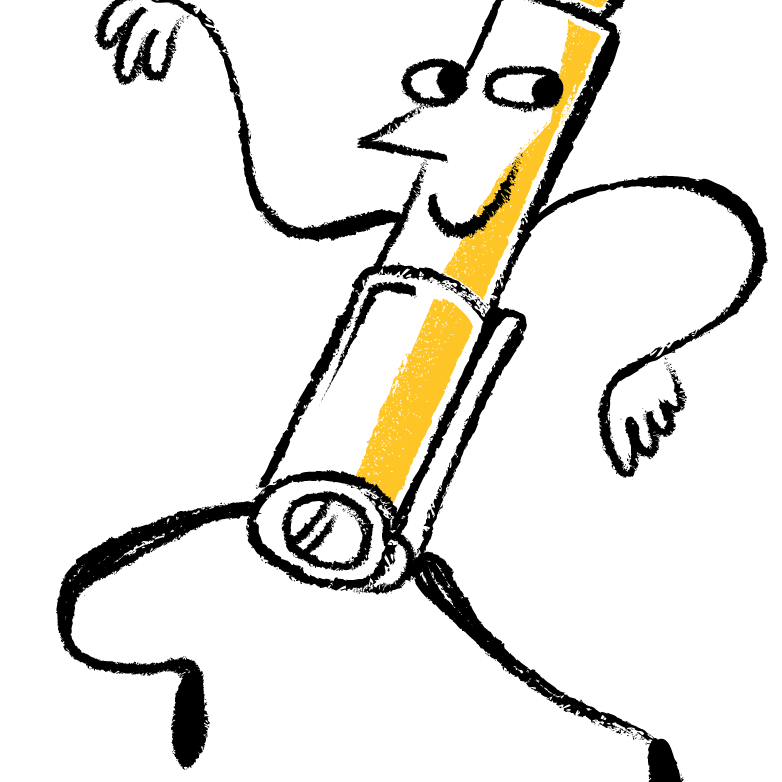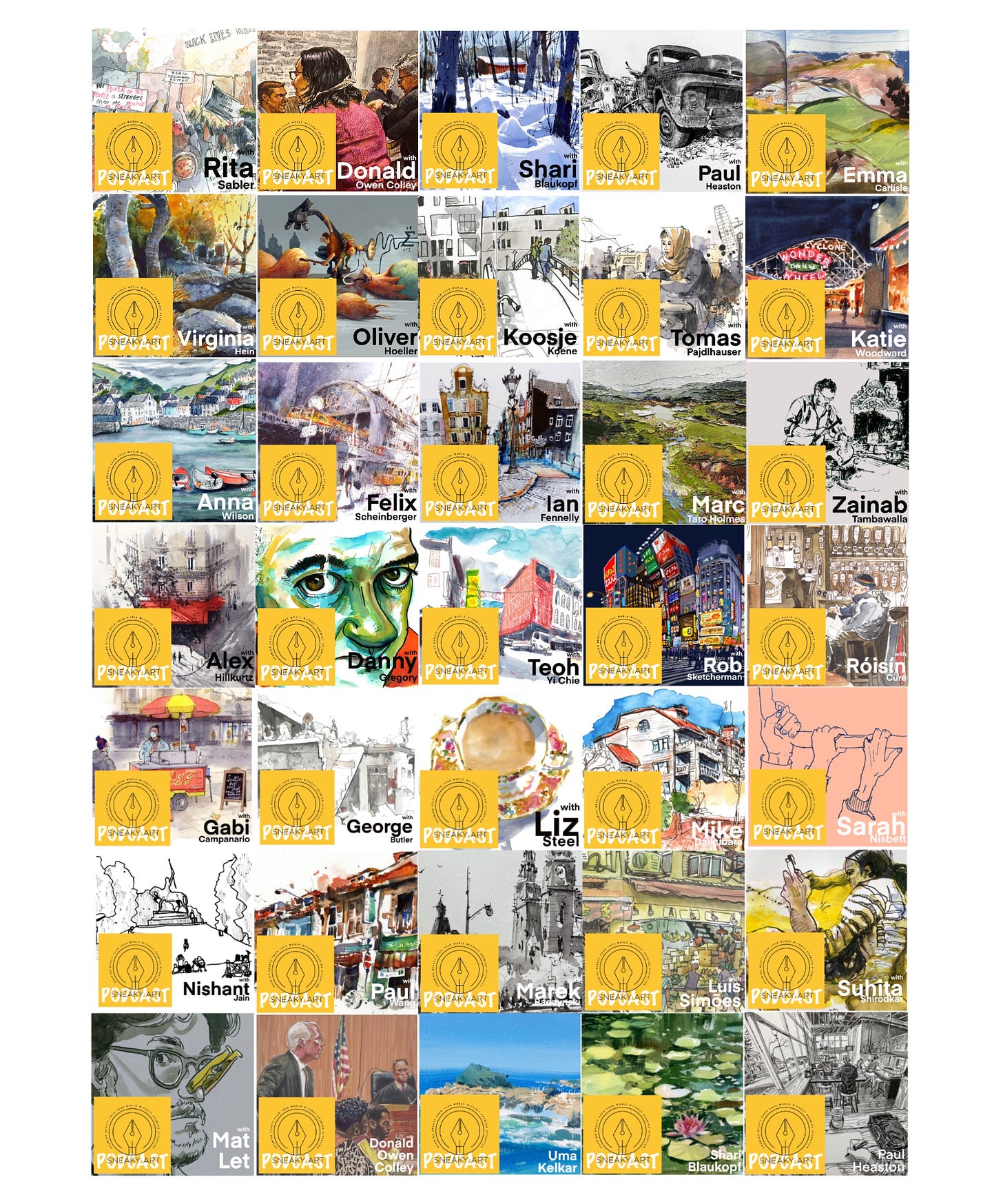I have exciting news to share: You can now read The SneakyArt Post in the new Substack app for iPhone.
With the app, you’ll have a dedicated Inbox for my Substack and any others you subscribe to. New posts will never get lost in your email filters, or stuck in spam. Longer posts will never cut-off by your email app. Comments and rich media will all work seamlessly. Overall, it’s a big upgrade to the reading experience.
The Substack app is currently available for iOS. If you don’t have an Apple device, you can join the Android waitlist here.
👋🏼 Hello, reader.
Last week, a fan of the podcast asked why my episodes are so long. That’s a great question!
In today’s post, I discuss why I chose the long-form, conversational format I have used for 18 months of the SneakyArt Podcast.
If you like my work, please stop people on the streets and tell them about it.
Just calculated … I have released 36 conversations clocking over 71 hours! Anyone here who’s been with me through all seventy one hours? Hey!
💭 Why a podcast?
The podcast, like this publication, is a child of the pandemic. Suddenly deprived of the company of fellow sketchers, I started looking for a way to stay in touch.
Hanging out with urban sketchers did great things for my art. I learned from some by peering over their shoulders. I learned from others by asking questions.
As a foreigner living in different parts of the Midwest, these communities also became a great way to make new friends. It’s a common saying among urban sketchers that going on your first sketch-meet feels like finding your tribe. I agree.
Today the SneakyArt Podcast has thousands of listeners from over 40 countries. But it began with a simple, selfish desire - to speak with artists I admired, and keep learning.
🎙 What I like about long conversations
There is a moment in every conversation I have recorded, usually between 45 to 60 minutes in, when the guest starts to behave a certain way. I describe it as the Lean In Moment. It’s a sign that I’m doing a good job, so I’ve learned to pick up on it. Here are the visual cues I find -
The guest will lean forward, they have something to say. Their eyes will light up, because their mind is now fully active. Their shoulders will relax, because they are comfortable. They might tap their fingers. They may nod their head to what I’m saying. Their mouth will flutter open.
I watch out for this moment because after it the conversation suddenly takes a new direction. The pretense of formal-speak drops, and we look past the artifice of long-distance video communication. We begin to connect across space and time.
A long conversation is actually marked my several such moments. This is because long conversations are, by design, more receptive to exploration and discovery.
🎙🎙 What I like about long conversations
Speaking with guests from around the world, I have come to appreciate the different cadences that conversations can have. An observation: people from different cultures have different notions of overlap and interruption in a conversation.
This was confirmed for me by an excellent episode of the Hidden Brain podcast. Some cultures engage in a lot of conversational overlap - like affirmations and repetitions. But people from a different culture might perceive any overlap as an interruption.
It comes down to this: what do you think is the acceptable amount of silence in a conversation before you can chime in? Friction in conversation is a matter of milliseconds!
My job as the host is to make the guest so comfortable that they forget there is a screen in front of them. I want them to forget that they are speaking with a stranger. If English is not their first language, I want them to feel that they have enough time to articulate their thoughts.
Another observation: Non-native English speakers use fewer idioms, which makes all sentences a little more fresh, a little sparkly.
🎙🎙🎙 What I like about long conversations
We are drowning in shallow engagement. When I started the podcast, I wanted to make a case for deep engagement. Related, listen to this episode about deep work on the Hidden Brain podcast.
Deep engagement is good for you. But it is getting harder to cultivate.
So the deal with podcast listeners begins on a note of consent. One of the first things they learn about any episode is the length. It sits in the podcast feed, sorted chronologically, until they decide to give it their time. By hitting play, the listener makes a commitment towards deep engagement. I like to think that is a positive step already!
🗺 New Directions
I made these design decisions a long time ago. Since then, episodes have become longer and conversations have become richer. With 40 recordings under my belt, I feel like I want to re-evaluate the goals of the podcast. These are my main questions:
Do I want to do some shorter episodes?
Should I try another format of episode?
What do you think?
I will be testing some new ideas with SneakyArt Insiders over the course of next month’s 30 Day project. By the end of the project, I hope to have good answers!
To be part of the Insider Club - to get access to all exclusive content, and help me plan my next moves as an artist, writer, and podcaster - sign up to support my work.
A quick note to new readers: the SneakyArt Post goes out twice a week.
On Wednesdays, I send out a SneakyArt Drop to share my latest work. It will have few words but many lines (typically scratched in ink). It is an antidote for your inbox so full of words.
On Fridays, I share my best ideas from this journey of self-education to be an artist. The weekly writing commitment is an invaluable part of my work-cycle now, and readers like you help me close the feedback loop. Take it from the control engineer I used to be - without a reliable feedback system, it is easy to stray from your target!
On Sundays, paying subscribers receive an Insider Post with bonus content and giveaways.
I appreciate the time and attention you give me every week. I don’t want to waste any of it. Share your thoughts in the comments. Or hit reply to this email. I would love to hear from you!
Thank you for your time and attention. See you next week!












I love the length of the podcasts. I never want them to stop. I run on a treadmill or do the elliptical to them. So interesting.
I am getting used to the long conversations and I agree with what you said about the advantages of them. However, I can't listen for such a long time, and have to break it up, often into week long listens. I like the way the computer will save my place so I can pick it up each time without searching. I always pick up some "gem", no conversation has felt like a waste of my time. You do a good job of interviewing.